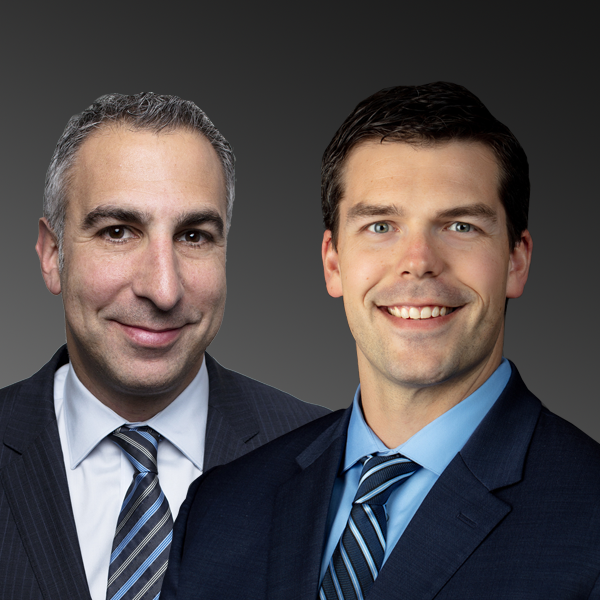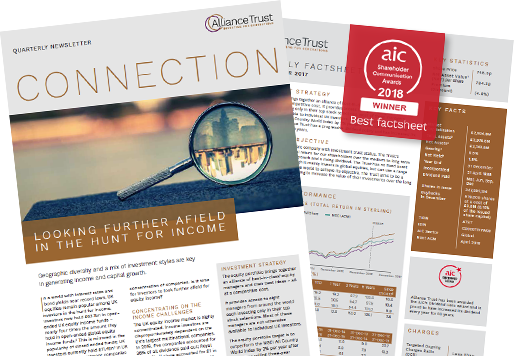ETFs versus ITs
ETFs are shiny, new and booming and various fund providers are hailing active ETFs as the next big thing. But it could be argued that active ETFs have been around since the 1880s in the form of investment trusts. We spoke to ten experts to compare the two vehicles.
Exchange-traded funds or ETFs – listed funds that give quick access to a range of indices and assets – are big business in the US where they command more than 23% of assets. Uptake is comparatively low in Europe, where they account for less than 10% of assets, Morningstar data compiled for Alliance Trust shows.
It is a market that is attracting growing interest due to its development from traditional passive ETFs that simply track an index, sector or commodity to ‘smart beta’ ETFs that use a blend of passive and active strategies by following bespoke indices based on particular fundamentals and now ‘active’ ETFs. They have a manager or team making investment decisions and the flexibility to trade outside their normal rebalancing periods.
Active ETFs account for just 0.72% of total US assets and 0.13% of European ones, the Morningstar data shows, but global fund selectors expect them to rise strongly in popularity. Asset allocators reckon active and smart beta ETFs will account for 39% of clients’ overall ETF holdings by 2023, up from 20% three years ago and 31% at present, according to a survey by JP Morgan Asset Management.
James Sullivan, head of partnerships at Tyndall Investment Management, said: “The ETF market has witnessed phenomenal growth in recent years, catalysed by a changing regulatory landscape and a broadening of the ETF market.
“Historically, one would be forgiven for suggesting ETFs are passive in nature, constructed to track an index, but there’s been a purposeful shift towards active ETFs by product providers. This has created a new benchmark for traditional mutual funds and investment trusts.”
James Carthew, head of investment company research at QuotedData, draws several parallels between active ETFs and investment trusts that have zero discount control mechanisms (whereby boards buy back shares to narrow a discount or issue them to reduce a premium).
“Both are listed. Both expand and contract in response to investor demand. Both have a depositary. Both need a fund manager or managers. Both need accounts and must report to investors,” he said. “The more you go into the detail, the more it seems that we’re reinventing the wheel.”
On the face of it, active ETFs ought to be viable competitors to investment trusts. However, active ETFs have so far failed to ignite the interest of UK investors. Vanguard launched its first active ETFs on the London Stock Exchange in December 2015 but closed them in February 2021 due to insufficient demand.
Managed by Vanguard’s quantitative equity group, the four Ireland-domiciled ETFs were designed to provide broad, globally diversified equity exposure each with a tilt to an investment factor – value, momentum, low volatility and liquidity. At the time of their launch, Vanguard said the products were “a compelling alternative to high-cost active strategies that target similar exposures”.
Ben Yearsley, a director at Shore Financial Planning, believes there is “no reason why active ETFs shouldn’t or couldn’t take off here”. Part of the problem is structural – “the UK market is centred around mutual funds and platforms have largely developed with those in mind” – and part comes down to the idea that the ETF market is “passive only, with the odd exception”.
Cost
There is also a perception that ETFs should be ultra-cheap. “Anything that isn’t sub, say, 0.3% is seen as expensive,” said Yearsley.
ETFs that track the FTSE 100 can be bought for an annual cost of 0.07% but others cost considerably more. Vanguard’s European active ETFs carried ongoing charges of 0.22%.
Darius McDermott, managing director of Chelsea Financial Services, gives the example of Fidelity Global Quality Income ETF, a ‘smart beta’ ETF that tracks the Fidelity Global Quality Income index, which has been designed to reflect medium and large developed market companies that pay dividends and have quality characteristics. It levies ongoing charges of 0.4%, whereas investors can buy an actively managed income fund for 0.25%.
The argument, for Carthew, comes down to value for money. “Is the management company creaming off a fatter profit margin from one than the other? Accusations have been made against the ETF industry in the US that the degree of active management involved in running some of these ‘active’ ETFs is minimal and the active ETF industry is just a way of expanding profit margins over passive ETFs,” he said.
“This seems plausible – not only do they seem a bit gimmicky, but why should investment managers focus their attention on accounts that are less profitable to them?”
Performance
While cost is important, performance is arguably more so. “Investors have been duped into believing that investing is all about cost,” said Roddy Kohn, managing director of Kohn Cougar. “This shouldn’t surprise anyone because the passive fund industry is a behemoth and exceeds the money invested in active funds. Its impact on investors psyche is becoming more pronounced.
“I tell my clients: ‘Don’t let the charges tail wag the investment dog.’ After 40 years in business I’m still having to remind new clients of this tried and tested mantra.”
Investors, he said, should think about the benefit that the more focused approach of many investment trusts brings to their portfolio. “Our client portfolios are littered with investment trusts that have easily outperformed many ETFs,” he said.
Kepler Partners points to a string of research papers that support the case for a more concentrated – but still highly diversified – approach. “The overwhelming evidence is that fund managers who are willing to back their convictions with punchy bets are the ones who tend to outperform by the highest margin,” said investment trust analyst William Sobczak.
A 2013 paper by finance professor turned fund manager Antti Petajisto asserted that the most active stock-pickers outperformed their benchmarks by 1.26% a year after fees. In 2015, academic Martijn Cremers looked at high active share portfolios (those that differ the most from their benchmarks) relative to the investment timeframe and found that managers who held stocks for more than two years outperformed by more than 2% per year.
“These findings are particularly pertinent for investment trusts where the closed-end structure allows managers to hold more concentrated portfolios and take a longer-term view on them,” said Sobczak.
Management
The range of levers that managers of investment trusts have to pull in running their portfolios also contribute to them being able to “offer exceptional value”, according to Kohn.
Managers can retain up to 15% of the income their investments generate each year to distribute in leaner years. They can also enhance returns in rising markets by employing gearing. “With trusts you are getting a lot more,” said McDermott.
An additional benefit that investment trusts hold over ETFs is what John Newlands, founder of Newlands Research, calls the “human side”.
“By this I mean that shareholders’ money is managed by identifiable real people. Even if owning only a few shares, individuals have the right to vote, attend AGMs and even to meet the fund managers and board. Try asking that in the quasi-derivative murk that clouds the underlying processes behind some ETFs.
“I particularly enjoy Alliance Trust’s AGMs, which are always hugely attended – and at which are served some of the best individual minced steak pies you will ever eat. These morsels were absent one year, but reappeared the next, following constructive feedback from my own good self.”
Pricing
Another key difference is pricing. While ETFs typically trade at net asset value or very close to it, investment trust shares can trade at significant discounts or premiums.
Buying shares at a discount that later narrows augments returns (though, of course, discount widening has the opposite effect). This is among the reasons that wealth manager Philip J Milton & Co, a staunch value investor, uses investment trusts extensively.
“We do so because of their technical opportunities, such as discounts, income reserves which were so valuable last year and gearing which boosts returns in buoyant times. We have no axe to grind but inevitability dwell mainly in the best value space as we see it for the client,” said founder Philip Milton.
The fact that ETFs are compelled to trade regardless of value can cause problems, as was evident last April when they got swept up in plummeting oil prices.
“Had oil ETFs not existed would the negative underlying commodity prices have arisen?” asked Milton. “An ETF has no choice but to trade, so a very popular illiquid assets one could force asset prices very high and an unpopular one force sales at very low prices. An investment trust manager, by comparison, is never a forced seller.”
Governance
Both investment trusts and ETFs have a board of directors. “The board of the investment company has more teeth in that it could realistically fire an underperforming manager – not ever likely to be the case for an ETF,” said Carthew at QuotedData.
Sullivan at Tyndall also points to greater oversight and scrutiny among investment trust boards. “In a world that is becoming more aware of ESG [environmental, social and governance] factors, it could be argued that the independent board of an investment trust offers a layer of governance that is not seen so explicitly in ETFs,” he said.
The investment trust sector is governed by the Association of Investment Companies’ 2019 code, which sets out a framework of best practice and has been endorsed by the Financial Reporting Council whose mission it is to ‘promote transparency and integrity in business’.
“The code puts shareholders at the front and centre of all it strives to achieve,” said Sullivan. “It addresses performance and risk, transparency, cost, liquidity and communication – key observations of many investors when doing their due diligence on an investment.
“When it comes to governance standards investment trusts that subscribe to the AIC code will be hard to beat. Even if it comes at a marginally higher cost to the investor, there is something to be said for being able to sleep a little easier.”
Exposure
Through ETFs, investors can get exposure to more niche areas such as currency and commodity markets – anything from wheat, biofuels and water to lean hogs and live cattle – as well as more mainstream equity and bond markets.
“You can reflect esoteric ideas through ETFs – sometimes nothing in the investment trust space exists for what you want to do,” said Milton.
At present, his client portfolios have reasonable weightings to three defensive ETFs – one that profits from sterling strengthening against the euro, another that tracks the price of coffee and a third the price of aluminium. He has also made a small allocation to the cheap Turkish stock market through an ETF.
Investment trusts, meanwhile, are well suited to investing in less liquid assets, such as alternatives, private equity and smaller companies, as well as enabling investors to take diversified or focused exposure to stock and bond markets. Their closed-end structure means their managers do not need to consider the liquidity of the underlying assets as much.
“An ETF that has exposure to illiquid assets could come a cropper if a large portion of the investor base decided to sell at the same time, potentially making it a forced seller of an illiquid asset at a price that is well below its true value,” said Jon Smith, head of research at Casterbridge Wealth.
“ETFs have the benefit of intraday dealing, unlike other open-ended collectives, and I think active ETFs will continue to grow for this reason but that will likely be at the expense of open-ended peers as opposed to investment trusts. Investment trusts still have the leverage and opportunity to invest in less liquid assets that would not be feasible in an ETF structure.”
Holding period
None of this is to say that ETFs do not have a place. “The multiple structures through which one can invest offer the investor a wonderful menu of options and there’s seldom a right or wrong answer,” said Sullivan. Yearsley at Shore added: “They all play a part in a modern, diverse portfolio.”
For David Liddell, a director of online advisory investment service IpsoFacto Investor, ETFs are best deployed for short-term, tactical moves and investment trusts for longer-term strategic positions.
“You don’t run Tiger Roll in the Derby, nor would you enter Frankel for the Grand National,” he said. “In other words, the investment trust ‘stayer’ may be more attractive for the long-term investor than the more youthful and short-term ETF.”
IpsoFacto’s mainstream investment trust portfolio used a FTSE 100 ETF in the recent past but has since switched to an investment trust standing at a good discount.
“The advantage of using ETFs as tactical plays, particularly in turbulent periods, is that the investor avoids the risk of discount widening and the effect of gearing on the downside,” said Liddell.
“For the long-term investor who does not want to make too many tactical plays the investment trust with its ability to be purchased at a discount to net asset value, an element of gearing and usually relatively attractive fees remains a better bet.”






